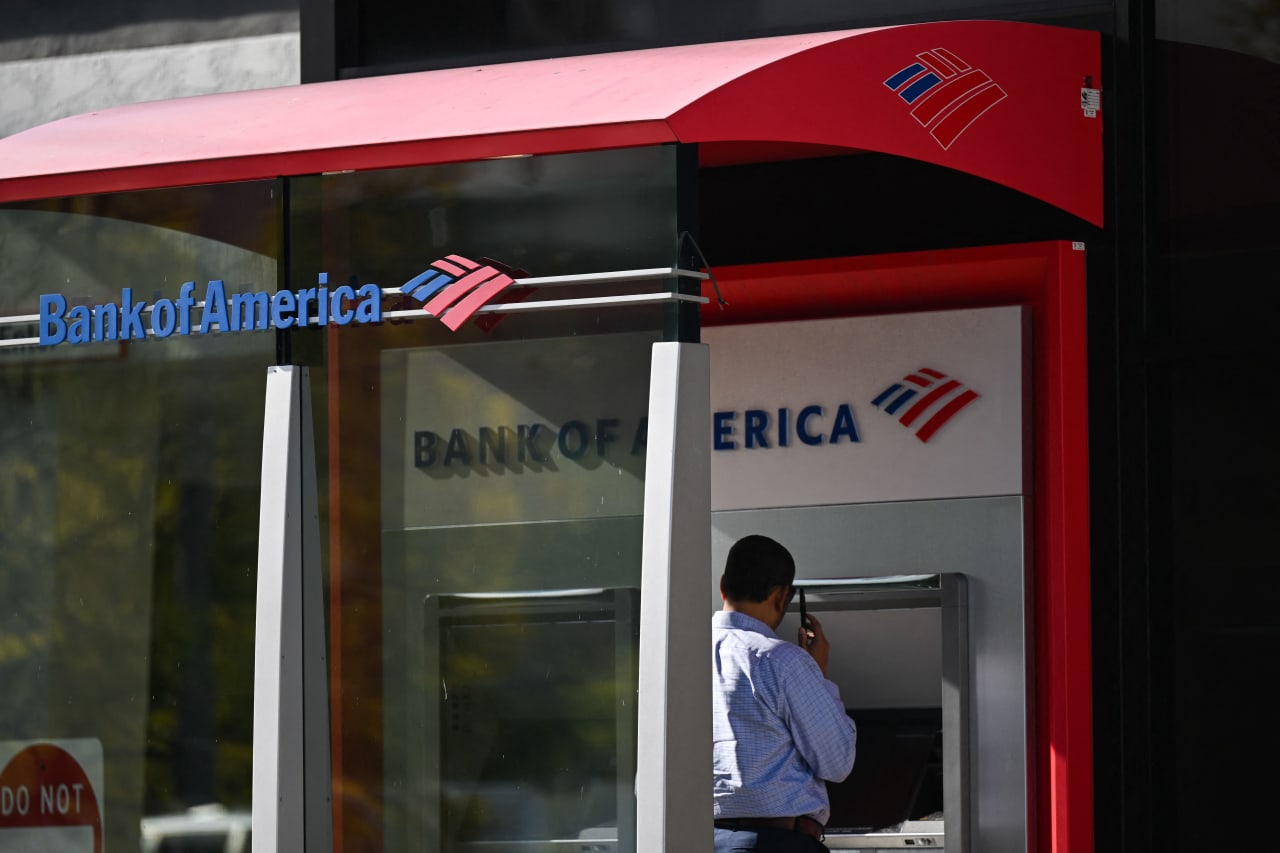Has The Inflation Genie Escaped The Bottle?
MSQ Capital’s Managing Director Paul Miron thinks a small recession could be the key to economic control.
OPINION
For the past 40 years, inflation in the western world has not triggered any emotion…until now. Naturally, the question we must ask is: What exactly has caused the sudden panic, fear, and obsession with the subject of inflation?
In central banks’ pursuit of taming inflation, we have seen the blunt instrument of raising interest rates being applied worldwide. This has negatively impacted most asset classes, especially property and shares.
Since 1990, the general trajectory of interest rates has been downward, ultimately reaching the floor of a 0.1% p.a. official cash rate in Australia. In other words, “free money”. This led to an unprecedented demand for almost any time type of asset that can store wealth.
It is no surprise that with the onset of rate hikes, as well as wild predictions of the share market and property market falling in excess of 60% and 30% respectively, all types of investors have their eyes and ears fixated on what will happen next in the global economy.
On the topic of interest rates, it must be noted that if rates are raised too quickly, they could trigger a recession. On the other hand, if inflation is unchecked this could lead to deeper and more damaging recessions worldwide. It may take decades to return to normality.
This is undoubtedly the most pressing economic issue of our time.
To understand the origins of inflation and to arrive at possible antidotes, one needs to dust off their economics textbooks from an era that experienced this phenomenon firsthand – the 70s.
As one of my favourite sayings goes – “History doesn’t repeat itself, but it often rhymes.”
What is the True Origin of Inflation?
Milton Friedman is one of the most highly regarded economists of modern times, reinforced by his receiving of the 1976 Nobel Memorial Prize in Economics for his work on the study of inflation. He is the principal architect of modern monetary policies applied by western central banks.
The words Friedman uttered during his era are all the more relevant to today’s economic climate. As he put so simply: “Inflation is a monetary phenomenon. It is made and stopped by central banks.”
In other words, it is the volume of money being printed, which can be economically summarised as an increase in the money supply, that is relevant to the question of inflation.
Increase In The Money Supply
Since the onset of COVID, the increase in money supply has never been more significant in our economic history. We have been paid a raft of various government benefits to sit at home and disrupt normal business and spending habits. At the same time, the RBA increased the money supply to counterbalance the loss of productivity. Central banks were essentially “printing more money” at a rapid pace, while lowering interest rates and allowing the bank to issue more credit.
Also, let us not forget quantitative easing, where the government buys and issues debt, reducing the cost of capital and creating massive liquidity in the financial markets.
According to Friedman, once a rapid increase in money supply occurs, it takes anywhere between 6 to 18 months for inflation to work through the economy. We are seeing this phenomenon firsthand here in Australia and around the world, with inflation rates not seen since the 70s.
Friedman also noted that inflation is not a global phenomenon but a home-grown problem that is caused by central banks and can be remedied by central banks.
Supply/Demand for Goods And Services
In the normal free-market economic system, prices of goods and services adjust according to demand, with businesses either increasing or decreasing production. Over time, this results in new business entrants increasing supply, or businesses leaving the market and decreasing supply.
Counterintuitively, these disruptions do not cause persistent inflation. From the onset of COVID, the stop-and-start nature of the global economy has resulted in supply chain issues and overnight demand for certain services, with employers needing to re-skill and re-tool their businesses to cope with unexpectedly high demand.
Once again, using free-market logic, these issues will eventually resolve themselves over time. Economists often refer to these impacts being ‘transitionary’ impacts of inflation; that is, temporary.
Looking back at the ’70s inflation crisis, many governments around the globe tried to lay blame on the 1973 war in the Middle East that disrupted oil production and increased its price by as much as 400%. Comparisons can be drawn to the Russian-Ukraine War and its effects to supply chains and commodities globally.
Despite this, the teachings of Milton Freidman tell us that these supply shocks provide short-term inflationary pressure. In the long-term, free-market economics will find a way to adjust the demand and supply of these goods.
Future Price Expectations
Perhaps the most ignored and least discussed aspect of inflation is future price expectations.
In the US, Australia and most western economies during the ‘60s, inflation had been unchecked for many years, rising from 1.5% to 5% during the ’60s, and reaching more than 14% in the ‘70s. In addition, wage inflation in Australia for the five years during 1969-1974 went up by 98%.
If businesses and employees are accustomed to long periods of persistent, rising inflation, a natural response to the rising cost of living will be employees demanding an adjustment to their wages, leading to higher prices and higher inflation. In such a situation, inflation becomes embedded in expectation and becomes a self-perpetuating inflationary issue that is commonly referred to as the ‘wage-price inflationary spiral’.
The main lesson to be learnt from the 70s is that we cannot allow unanchored inflation expectations. Central banks must act swiftly to tackle inflation and maintain the status quo of people having anchored expectations of inflation so as to maintain faith in our financial system. This is to avoid inflation becoming uncontrollable and inflicting unnecessary harsher pain to the economy.
This is precisely why despite Labor’s promises to support the market with 5.5% wage inflation, the RBA recommends that it remains capped at 3.5%. Lower wage inflation guards against a wage-price inflationary spiral.
Thus, we reach a conclusion that a short recession is better than losing control of inflation and letting loose future price expectations.
Looking back at our central bank, the current actions taken by the RBA are taken right out of pages in Milton Freidman’s economic textbook. They are acting swiftly and assertively.
We believe the next 6 months will have a heightened level of volatility in both the property and share market until there is evidence that the inflation beast has been tamed. We anticipate that this will only occur towards the end of the year once we receive data reflecting lower inflation.
Investors should expect a short and fast series of interest rate rises over the next four months.
Hopefully, this will be followed by stability with minimal changes to the official cash rate during 2023. This would enable the economy to re-adjust to the psychology of normalised interest rates.
The RBA Governor, Philip Lowe, indicated that an official rate of 2.5% is the correct setting for a neutral monetary policy and money supply. Investors and borrowers should brace for this setting sooner rather than later and prepare for the fact that we will have higher interest rates and softening asset prices.
Australia’s present economic strength is significant with a low base of unemployment, plentiful natural resources and a food-rich economy. Despite this, the sudden increase in interest rates will pose an additional risk. As mortgage managers, we appreciate our risk assessment and are completely cognisant to the downward risk of depreciating property prices.
We assess the risk of properties depreciating by perhaps between 15-20% – maybe even more for some specialised properties as well as regional properties and vacant land. Additionally, some construction projects have a significant risk of delays and cost blowouts that continue to be the predominant risk factor for this type of debt over the next 12 months.
However, with the lack of supply, wage inflation, migration, low levels of unemployment, rental growth and times of inflation, property is naturally seen as an inflation hedge. Thus, property will remain relatively resilient through these inflationary times.
—
Paul Miron has more than 20 years experience in banking and commercial finance. After rising to senior positions for various Big Four banks, he started his own financial services business in 2004.

This stylish family home combines a classic palette and finishes with a flexible floorplan
Just 55 minutes from Sydney, make this your creative getaway located in the majestic Hawkesbury region.
When will Berkshire Hathaway stop selling Bank of America stock?
Berkshire began liquidating its big stake in the banking company in mid-July—and has already unloaded about 15% of its interest. The selling has been fairly aggressive and has totaled about $6 billion. (Berkshire still holds 883 million shares, an 11.3% interest worth $35 billion based on its most recent filing on Aug. 30.)
The selling has prompted speculation about when CEO Warren Buffett, who oversees Berkshire’s $300 billion equity portfolio, will stop. The sales have depressed Bank of America stock, which has underperformed peers since Berkshire began its sell program. The stock closed down 0.9% Thursday at $40.14.
It’s possible that Berkshire will stop selling when the stake drops to 700 million shares. Taxes and history would be the reasons why.
Berkshire accumulated its Bank of America stake in two stages—and at vastly different prices. Berkshire’s initial stake came in 2017 , when it swapped $5 billion of Bank of America preferred stock for 700 million shares of common stock via warrants it received as part of the original preferred investment in 2011.
Berkshire got a sweet deal in that 2011 transaction. At the time, Bank of America was looking for a Buffett imprimatur—and the bank’s stock price was weak and under $10 a share.
Berkshire paid about $7 a share for that initial stake of 700 million common shares. The rest of the Berkshire stake, more than 300 million shares, was mostly purchased in 2018 at around $30 a share.
With Bank of America stock currently trading around $40, Berkshire faces a high tax burden from selling shares from the original stake of 700 million shares, given the low cost basis, and a much lighter tax hit from unloading the rest. Berkshire is subject to corporate taxes—an estimated 25% including local taxes—on gains on any sales of stock. The tax bite is stark.
Berkshire might own $2 to $3 a share in taxes on sales of high-cost stock and $8 a share on low-cost stock purchased for $7 a share.
New York tax expert Robert Willens says corporations, like individuals, can specify the particular lots when they sell stock with multiple cost levels.
“If stock is held in the custody of a broker, an adequate identification is made if the taxpayer specifies to the broker having custody of the stock the particular stock to be sold and, within a reasonable time thereafter, confirmation of such specification is set forth in a written document from the broker,” Willens told Barron’s in an email.
He assumes that Berkshire will identify the high-cost Bank of America stock for the recent sales to minimize its tax liability.
If sellers don’t specify, they generally are subject to “first in, first out,” or FIFO, accounting, meaning that the stock bought first would be subject to any tax on gains.
Buffett tends to be tax-averse—and that may prompt him to keep the original stake of 700 million shares. He could also mull any loyalty he may feel toward Bank of America CEO Brian Moynihan , whom Buffett has praised in the past.
Another reason for Berkshire to hold Bank of America is that it’s the company’s only big equity holding among traditional banks after selling shares of U.S. Bancorp , Bank of New York Mellon , JPMorgan Chase , and Wells Fargo in recent years.
Buffett, however, often eliminates stock holdings after he begins selling them down, as he did with the other bank stocks. Berkshire does retain a smaller stake of about $3 billion in Citigroup.
There could be a new filing on sales of Bank of America stock by Berkshire on Thursday evening. It has been three business days since the last one.
Berkshire must file within two business days of any sales of Bank of America stock since it owns more than 10%. The conglomerate will need to get its stake under about 777 million shares, about 100 million below the current level, before it can avoid the two-day filing rule.
It should be said that taxes haven’t deterred Buffett from selling over half of Berkshire’s stake in Apple this year—an estimated $85 billion or more of stock. Barron’s has estimated that Berkshire may owe $15 billion on the bulk of the sales that occurred in the second quarter.
Berkshire now holds 400 million shares of Apple and Barron’s has argued that Buffett may be finished reducing the Apple stake at that round number, which is the same number of shares that Berkshire has held in Coca-Cola for more than two decades.
Buffett may like round numbers—and 700 million could be just the right figure for Bank of America.
This stylish family home combines a classic palette and finishes with a flexible floorplan
Just 55 minutes from Sydney, make this your creative getaway located in the majestic Hawkesbury region.


















